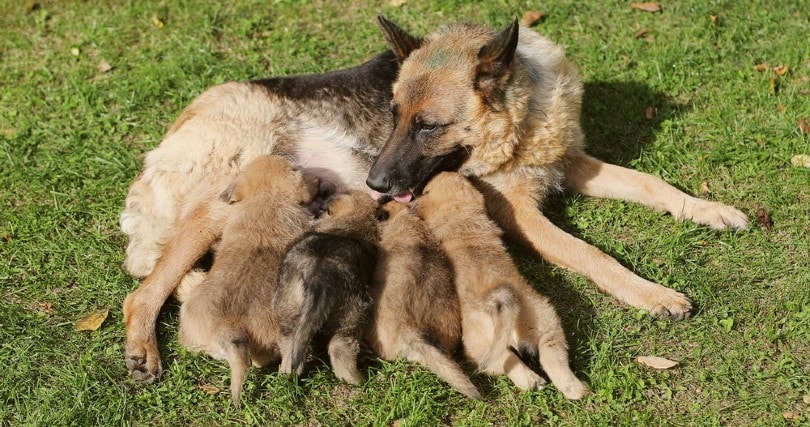10 Pug Pros And Cons: What To Know Before You Get One

Updated on
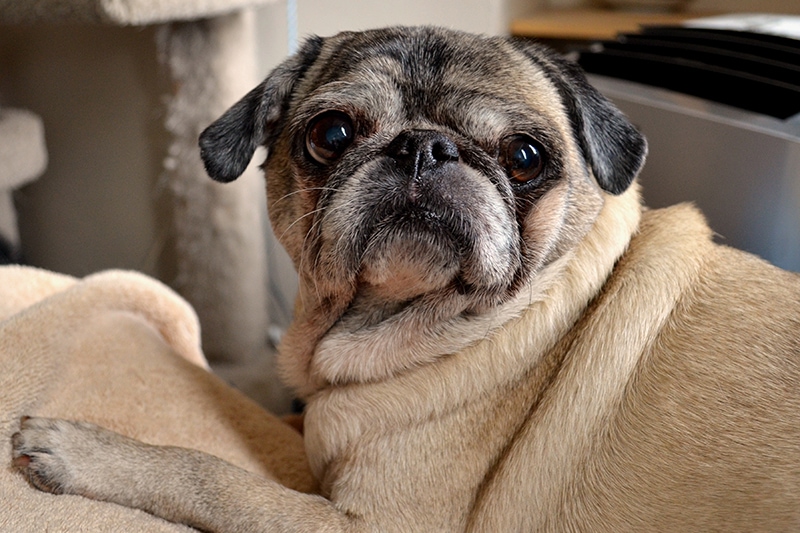
With their friendly personalities and disarmingly adorable looks, it’s no surprise that Pugs have been one of humanity’s favorite companions for centuries. There are few risks in bringing Pugs around people and property. In nearly every case, your primary concern will likely be protecting the dog from itself.
Getting a Pug includes a host of possible health considerations stemming from their pedigree. Understanding the benefits and drawbacks of this prized breed will be crucial in protecting your relationship with your pet, reducing medical expenses and vet visits, and promoting more responsible breeding practices. Let’s explore 10 pros and cons of Pugs to help you make the best possible decision before buying.
The 10 Pros & Cons of Pugs
Pug Pros
1. Small Size
As a toy breed, Pugs grow to only about 14–18 pounds and stand roughly a foot tall as adults. Though they’re sturdy dogs, their small size makes them adaptable to more situations than larger breeds.
Pugs are perfect pets for small homes and apartments. They travel easily and make for better cuddling on the couch. Small children and those wary of dogs often find Pugs much less intimidating than most dogs.

2. Mild Energy
Pugs accommodate a laid-back lifestyle, as they’re not particularly active and have only moderate exercise needs. Around 20–60 minutes of daily activity is typically all they need, with some quality playtime and a couple of short, brisk walks being sufficient. Acting more like cats, Pugs will sleep an average of 14 hours daily, making them pleasantly low-maintenance.
3. Friendly Temperament
One of the principal appeals of Pugs through their 2,000+ years as companion animals are their people-pleasing personalities. Pugs are affectionate and quick to bond with their owners and others. They’ll often act silly and playful, making them popular with children, adults, and other pets. Socializing is crucial from an early age, as with most breeds, but Pugs won’t take long to gain a gregarious demeanor.
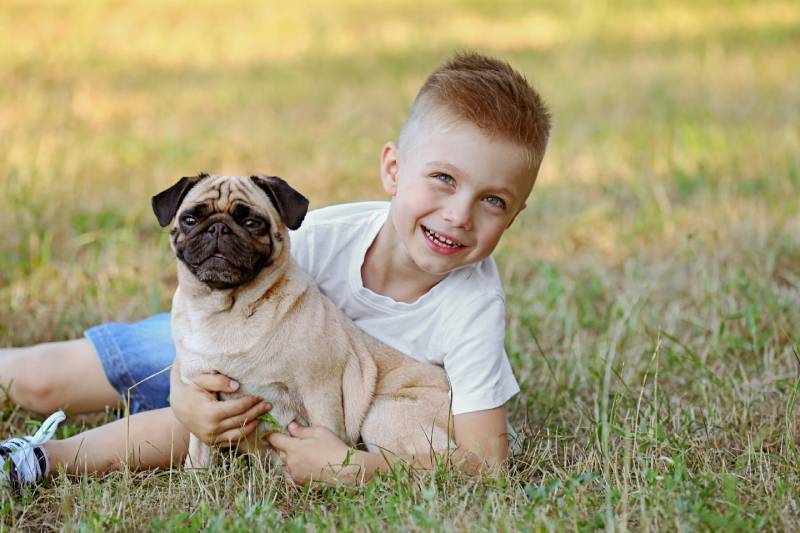
4. Easy to Train
Pugs are intelligent and highly aware of human signals, with a considerate personality that makes them relatively easy to train. Though they can sometimes be stubborn, Pugs respond well to positive reinforcement and won’t have much trouble learning basic commands and manners.
5. Guardian Personalities
While Pugs are generally calm, cool, and quiet, their small size belies a confident spirit. Pugs make surprisingly adequate guard dogs. Buddhist monks used them as guards in ancient Tibetan monasteries, and a Pug famously saved Prince William of Holland from assassination in the 1500s. Today’s Pugs retain that loyalty, staying relatively quiet during the day but quick to bark at and engage intruders.
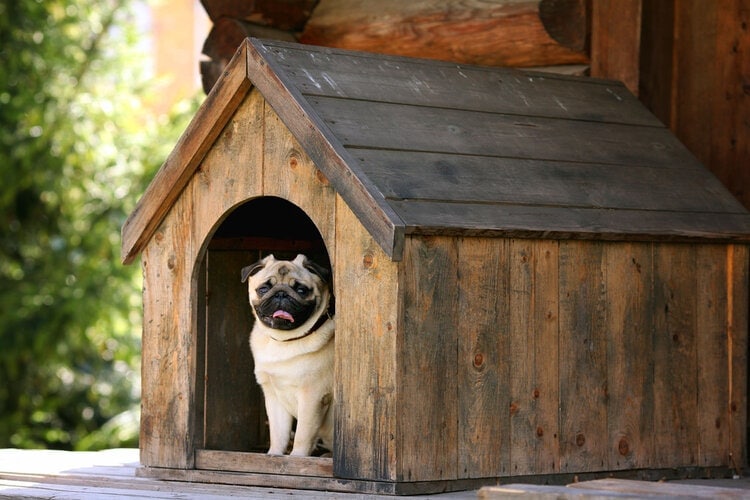
 Pug Cons
Pug Cons
6. Health Problems
The most notable Pug quality is its adorably squashed snout, an attractive trait that has pushed breeders toward flatter faces. As Pugs have grown in popularity because of these defining features, scientific research and animal welfare groups have brought awareness to their hazardous drawbacks.
A Pug’s flat face didn’t evolve over thousands of years. Humans bred it into pervasiveness in short order, and it’s the product of a genetic defect that those in power found adorable. While evolution would likely push the rest of the dog’s anatomy to suit the new facial form, breeding addressed nothing more than the length.
In other words, Pugs have a full head’s worth of organs, bones, and other tissue crammed into half a head of space. Pugs face several health issues as a result. A study by the Royal Veterinary College found that Pugs were 1.9 times more likely to develop health issues than other breeds. Common health issues include:
- Narrowed nostrils and elongated palates
- Corneal ulcers
- Skinfold infections
- Skin disorders
- Dental disease
Loud wheezing and snorting during the day and snoring at night are typical. Other common problems include spine deformities and hip dysplasia resulting from the Pug’s conformational breeding standards.
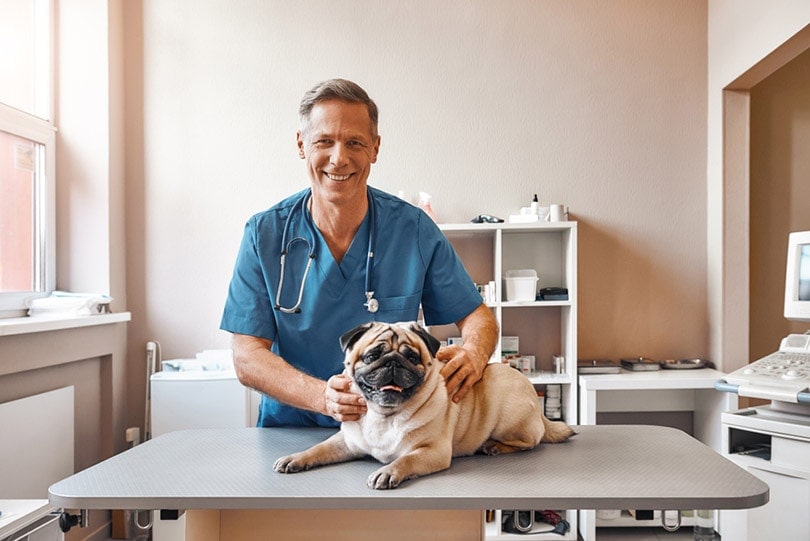
7. Medical Costs
Medical disorders are prevalent in Pugs because of their shortened faces. Brachycephalic obstructive airway syndrome (BOAS) occurs in brachycephalic breeds, including French and English bulldogs, Shih Tzus, Pekingese, and boxers.
Shorter faces cause several issues related to Pugs’ bulging eyes and restricted breathing. BOAS frequently causes respiratory infections. Dogs may also exhibit gastrointestinal distress signs, such as vomiting, reflux, and excessive drooling.
Pugs are almost 54 times more likely to suffer from BOAS than non-Pugs. In some cases, surgery is necessary to give the dog any chance of a decent quality of life. These are critical costs to consider before getting a Pug. Alongside a Pug’s ongoing vet care, surgeries to shorten the palate, widen nostrils, and open its airways often cost well over $1,000.
8. Heat Intolerance
You’ll have to be mindful of walking Pugs on hot days. With their restricted nasal cavities, these dogs have trouble keeping cool and can easily collapse from heat exhaustion.
Pugs generally aren’t efficient at regulating their body heat. You’ll often have to take extra steps to keep them cool in the summer and warm in the winter.

9. Facial Care
The adorable wrinkles that come with the brachycephalic facial form also entail plenty of care. Skinfold infections like dermatitis and pyoderma occur when the folds trap heat and moisture, allowing bacteria to thrive. Swelling, redness, and irritation are typical.
Owners must make facial cleaning part of the routine, using medicated cleansers and antibacterial wipes to keep infections at bay. Depending on the severity and the dog’s response to treatments, your vet may recommend surgery.
The Pug’s trademark bulging eyes also require consideration. Without a protective snout or a deepened pocket, a Pug’s corneas are prone to damage, such as scratches and punctures from debris. You may need to apply ointments or drops regularly to keep tear production up. Again, surgery is sometimes necessary to correct the issue.
At the same time, the eye’s loose hold in the sockets can cause it to become displaced, a condition called proptosis. Rough play, blunt trauma, or even pulling too tightly on a collar can cause excessive eye bulging, becoming an emergency if the eye dislodges from the socket.
10. Shedding
Grooming tools will be a crucial investment for Pug owners. Despite the short coat, Pugs are decent shedders. While the peak seasons will be in spring and fall, Pugs shed fur year-round, keeping you always busy if you want to maintain a clean and healthy home.
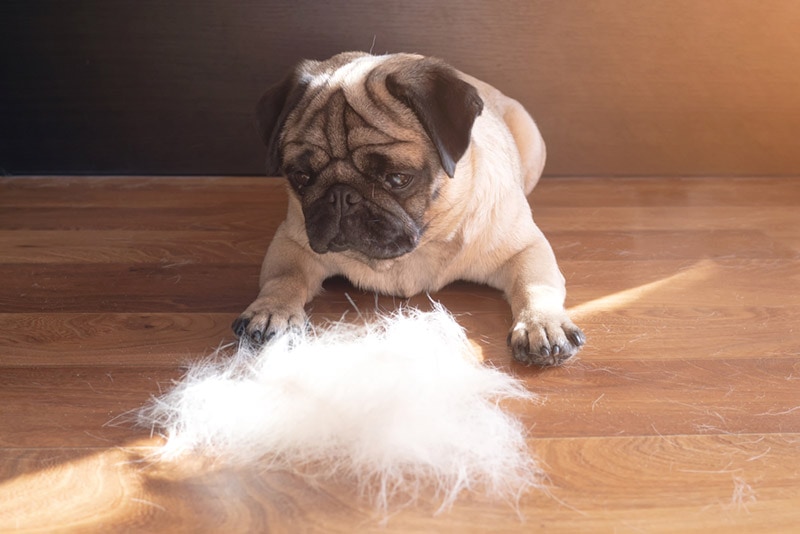
How Much Do Pugs Cost?
While the vet and medical expenses can drive up the cost of owning a Pug, the initial price isn’t insignificant either. Show-quality Pugs can cost over $3,000, and most purebreds will run at least $1,500.
If buying from a breeder, reputability is crucial. You can find ethical breeders with simple web or social media searches or by contacting kennel clubs and Pug dog organizations.
Breeders should provide as much detail as possible on the Pug’s particular needs and pedigree. Screening for issues such as BOAS, poor eye health, or hip dysplasia will ensure your dog has a long, healthy, and uncomplicated life while reducing expenses and effort on your side.
How Long Do Pugs Live?
Pugs generally live 10–14 years, about the same span as French bulldogs and slightly longer than the average English bulldog. The lifespan of brachycephalic breeds is, on average, three years shorter than other breeds. Proper research and early response to BOAS are critical to maximizing a Pug’s lifespan and quality of life.
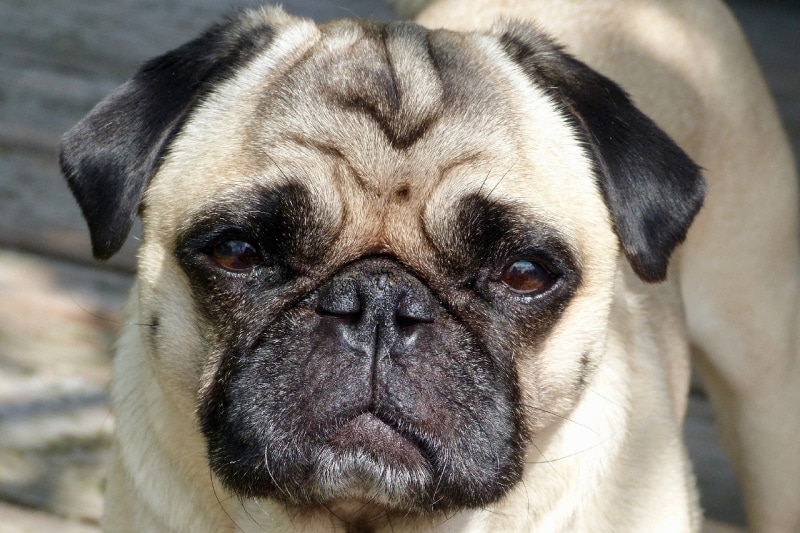
Conclusion
Pugs have a reputation for low-maintenance and minimal aggression. They’re a natural fit alongside people and pets, and you can work them into any setting, from the grandest mansions to tiny apartments. Though they come with as many considerations as benefits, knowing what to expect before you buy a Pug will set you up for a long and fulfilling relationship with your new companion.
- You might also like: 10 Best Muzzles for Pugs
Featured Image Credit: Jumpstory

 Pug Cons
Pug Cons



